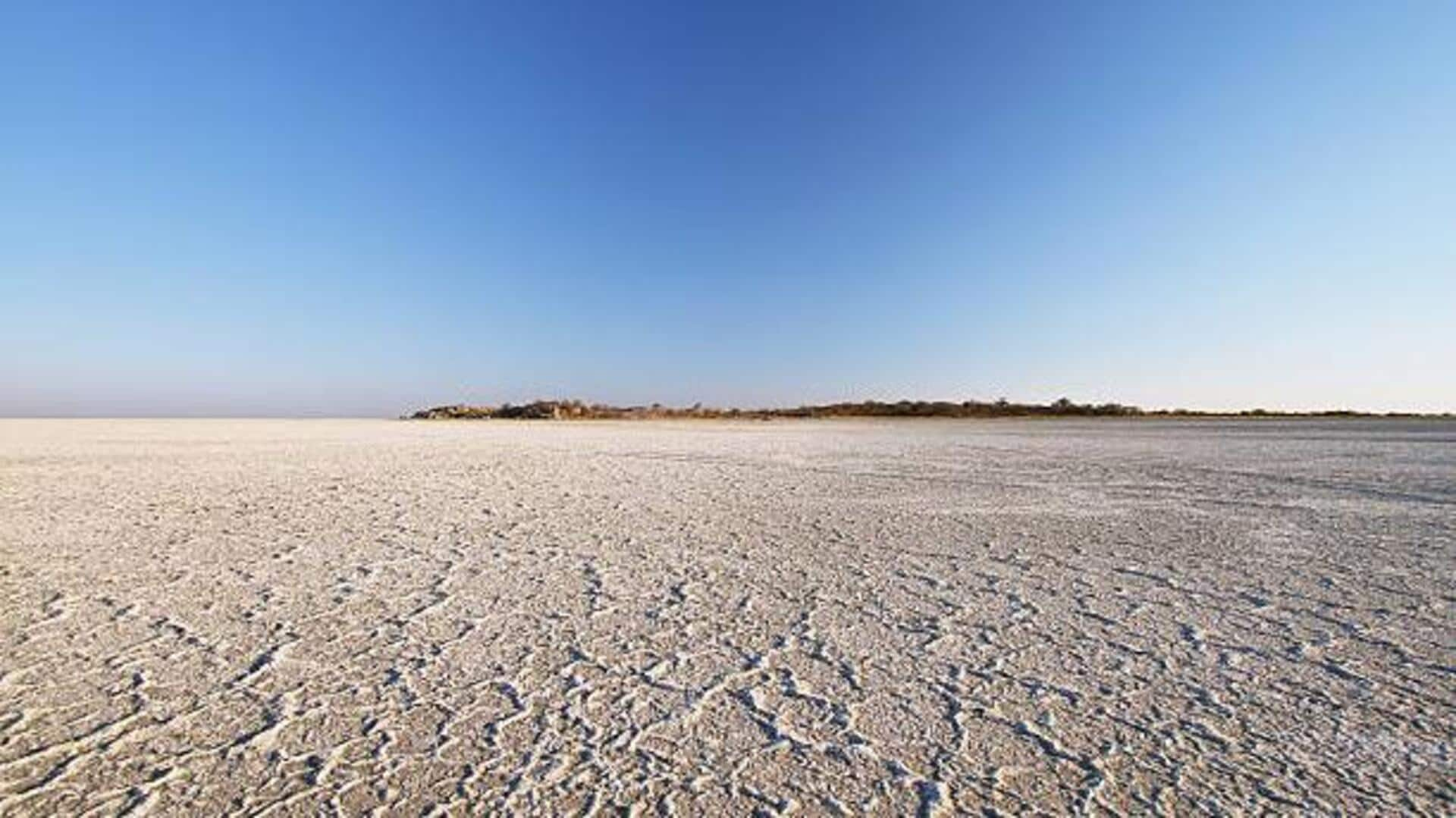
Kalahari Salt Pans: A must-visit destination
What's the story
Botswana's Kalahari Salt Pans are a unique travel destination, offering an experience unlike any other. These expansive, dry landscapes are not just a sight to behold but also an opportunity to explore the rich biodiversity and cultural heritage of the region. From the fascinating geological formations to the vibrant wildlife, the salt pans offer a glimpse into Botswana's natural beauty and cultural diversity.
#1
Discovering the Makgadikgadi Pan
One of the largest salt flats in the world, Makgadikgadi Pan is a remnant of an ancient lake. Spanning over 12,000 square kilometers, it offers visitors a surreal landscape. The pan is home to various wildlife species, including meerkats and flamingos during seasonal rains. Exploring this vast expanse gives travelers an insight into the geological history of the area.
#2
Wildlife encounters in Nxai Pan National Park
Nxai Pan National Park is famous for its diverse wildlife and stunning scenery. The park features grassy plains and occasional waterholes that attract elephants and giraffes. Birdwatchers will be delighted with the variety of species found here, including ostriches and several raptors. A visit to Nxai Pan offers an opportunity to witness these animals in their natural habitat.
#3
Cultural experiences with local communities
Engaging with local communities gives travelers a chance to learn about traditional ways of life in Botswana. The San people have lived in harmony with the land for centuries, and their knowledge of survival skills is invaluable. Participating in cultural activities such as storytelling or craft-making provides a deeper understanding of their heritage.
Tip 1
Tips for visiting Kalahari Salt Pans safely
When visiting Botswana's Kalahari Salt Pans, it's important to be well-prepared for extreme weather conditions. Carry plenty of water to stay hydrated, as the heat can be intense during the day. Wear light-colored clothing to reflect sunlight, and sturdy footwear for walking on rugged terrain. A wide-brimmed hat and sunscreen are essential for protection against UV rays.